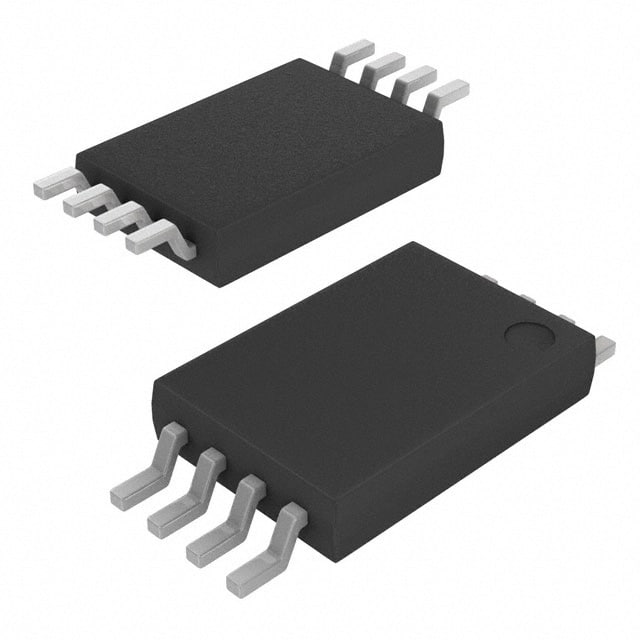Xem thông số kỹ thuật để biết chi tiết sản phẩm.

LM311PW
Product Overview
Category: Integrated Circuit (IC)
Use: The LM311PW is a high-speed voltage comparator designed for use in various electronic applications. It compares two input voltages and provides an output based on the comparison result.
Characteristics: - High speed: The LM311PW operates at a high speed, making it suitable for time-critical applications. - Wide input voltage range: It can handle a wide range of input voltages, allowing flexibility in different circuit designs. - Low power consumption: The LM311PW consumes low power, making it energy-efficient. - Output compatibility: It provides compatible outputs that can be easily interfaced with other digital or analog circuits.
Package: The LM311PW is available in a small outline package (SOP) with 8 pins.
Essence: The LM311PW is an essential component in electronic circuits where voltage comparison is required.
Packaging/Quantity: The LM311PW is typically sold in reels containing a specific quantity of ICs, such as 2500 units per reel.
Specifications
- Supply Voltage Range: 2V to 36V
- Input Offset Voltage: 2mV (maximum)
- Input Bias Current: 150nA (maximum)
- Response Time: 165ns (typical)
- Operating Temperature Range: -40°C to +85°C
Pin Configuration
The LM311PW has 8 pins arranged as follows:
___________
VCC |1 8| GND
IN- |2 7| OUT
IN+ |3 6| NC
NC |4 5| NC
‾‾‾‾‾‾‾‾‾‾‾‾
Functional Features
- Voltage comparison: The LM311PW compares the voltages applied to its input pins and produces a corresponding output based on the comparison result.
- Open collector output: It provides an open collector output, allowing easy interfacing with other circuits.
- Adjustable hysteresis: The LM311PW allows the user to adjust the hysteresis level, providing flexibility in different applications.
- Built-in voltage reference: It includes a built-in voltage reference for accurate voltage comparison.
Advantages and Disadvantages
Advantages: - High-speed operation enables time-critical applications. - Wide input voltage range allows flexibility in circuit design. - Low power consumption for energy efficiency. - Compatible outputs simplify interfacing with other circuits.
Disadvantages: - Limited number of pins may restrict complex circuit designs. - Requires external components for certain applications. - Sensitivity to noise and interference may affect performance in some environments.
Working Principles
The LM311PW works by comparing the voltages applied to its input pins (IN+ and IN-) and producing an output based on the comparison result. When the voltage at the IN+ pin is higher than the voltage at the IN- pin, the output goes low. Conversely, when the voltage at the IN- pin is higher, the output goes high. This behavior allows the LM311PW to function as a voltage comparator.
Detailed Application Field Plans
The LM311PW finds applications in various fields, including:
- Industrial automation: It can be used in control systems to compare sensor voltages and trigger appropriate actions.
- Power electronics: The LM311PW can be employed in power supply circuits to monitor voltage levels and provide feedback for regulation.
- Communication systems: It can be utilized in signal processing circuits to compare analog signals and make decisions based on the comparison results.
- Automotive electronics: The LM311PW can be integrated into automotive systems for voltage monitoring and fault detection.
Detailed and Complete Alternative Models
- LM339: This quad voltage comparator offers similar functionality to the LM311PW but with four independent comparators in a single package.
- LM393: Another dual voltage comparator that provides comparable performance to the LM311PW, suitable for applications requiring two comparators.
- LM324: A quad operational amplifier that can be used as a voltage comparator, offering additional amplification capabilities.
These alternative models provide options based on specific application requirements and desired features.
Word count: 537 words
Liệt kê 10 câu hỏi và câu trả lời thường gặp liên quan đến ứng dụng LM311PW trong giải pháp kỹ thuật
Sure! Here are 10 common questions and answers related to the application of LM311PW in technical solutions:
Q: What is LM311PW? A: LM311PW is a high-speed voltage comparator integrated circuit (IC) commonly used in various technical applications.
Q: What is the operating voltage range of LM311PW? A: The operating voltage range of LM311PW is typically between 5V and 30V.
Q: Can LM311PW be used as a voltage level detector? A: Yes, LM311PW can be used as a voltage level detector due to its high-speed response and open collector output.
Q: How does LM311PW handle input signals? A: LM311PW compares the voltage levels of two input signals and provides a corresponding output based on their relationship.
Q: Can LM311PW operate with both single-ended and differential inputs? A: Yes, LM311PW can operate with both single-ended and differential inputs, making it versatile for different applications.
Q: What is the maximum output current capability of LM311PW? A: The maximum output current capability of LM311PW is typically around 50mA.
Q: Is LM311PW suitable for high-frequency applications? A: Yes, LM311PW is suitable for high-frequency applications due to its fast response time and wide bandwidth.
Q: Can LM311PW be used as a pulse width modulator (PWM)? A: While LM311PW is primarily a voltage comparator, it can be used in conjunction with other components to create a PWM circuit.
Q: Does LM311PW have built-in hysteresis? A: No, LM311PW does not have built-in hysteresis. However, external components can be added to introduce hysteresis if needed.
Q: What are some common applications of LM311PW? A: LM311PW is commonly used in applications such as motor control, waveform generation, voltage monitoring, and analog-to-digital converters (ADCs).
Please note that the answers provided here are general and may vary depending on specific circuit designs and requirements.

